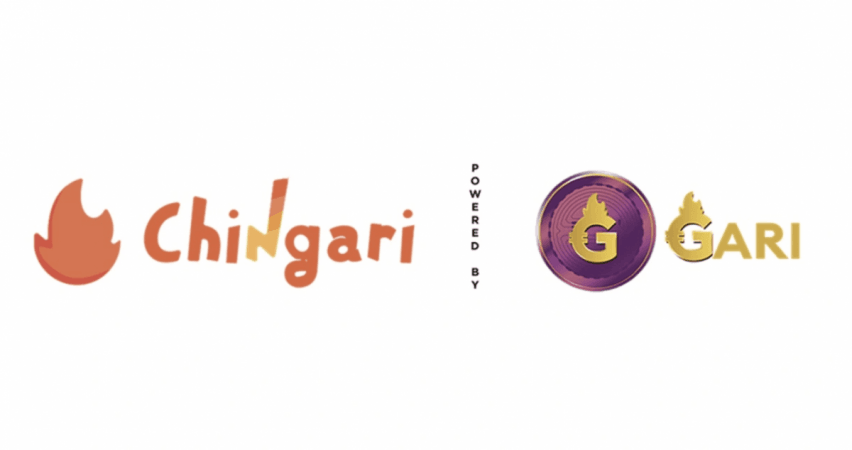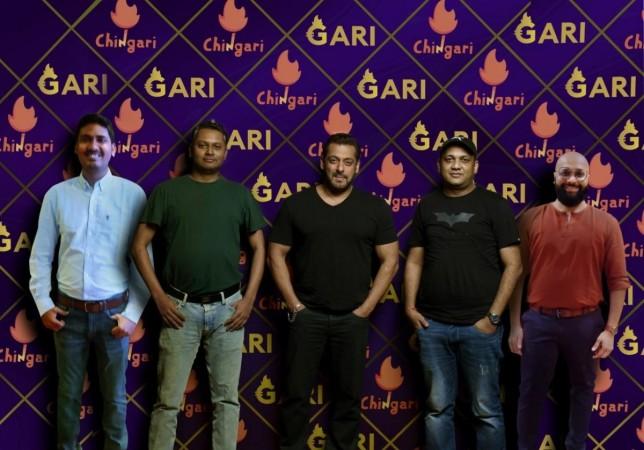Chingari, a short video app that started in India after Tik Tok was banned post-Galwan melee along the Line of Actual Control (LAC) has pivoted from a traditional Web2 to Web3 organization. The short video app recently announced fundraising from Aptos Labs and Jump Crypto. We spoke to Sumit Ghosh, CEO and co-founder of Chingari about the company's journey, its focus in the coming years, and its ambitious plan to launch a make-in-India app, globally.
Here are the edited excerpts of the interview.
IBT: Chingari is doing fairly in the Indian short video app segment. What has been its USP? Could you also share some metrics in terms of DAU, MAU etc?
Sumit Ghosh: Chingari, the homegrown leading on-chain social app has carved its own different path by going Web3 and that is the differentiator or to say its USP. We introduced GARI Mining in June last year through which not only creators but also users are incentivized in the form of native crypto tokens, GARI. Since the launch of the GARI mining program, we have onboarded more than 2.6 million GARI token holders and this has made the GARI Network, the 2nd largest project on the Solana blockchain in terms of the number of holders. This demonstrates the significant impact that the platform has had on the social media landscape, empowering creators and users through the use of blockchain technology. Chingari's success in carving its own path in the social app space serves as a testament to the potential of Web3 and the benefits that native crypto tokens can bring to social media platforms. Coming to metrics, Chingari has more than 173 million downloads. We have 5 million Daily Active Users (DAU) and MAU is 40 million. Chingari is in the Top 20 apps for the most downloaded apps on Google Playstore.
IBT: What has been the reason for the pivot to Web3? Are the traditional methods of monetisation not generating enough revenues?
Sumit: Chingari decided to pivot to Web3 in order to leverage blockchain technology to improve the platform's user experience and monetization options. The move to Web3 is part of a broader strategy to differentiate Chingari from other social media apps and create a more engaging user experience. The traditional Web2 social media platforms are highly tilted towards creators not focussing much on users. Web3 provides enough incentives for users as well as for creators and we at Chingari incentivise users by rewarding them with GARI tokens for engaging on the platform. This sets us apart from other social media platforms.
The traditional methods of monetization on social media platforms, such as advertising revenue can generate significant revenue but may not always provide a sustainable source of income. Additionally, these methods may not always align with the interests of users and can lead to privacy concerns. Chingari aims to provide users with greater control over their data and content, as well as new monetization options such as NFTs. These new revenue streams may prove to be more sustainable in the long term and offer greater benefits to both users and the platform.

IBT: What is the revenue Chingari generated in the last FY? What is the target for next year if any?
Sumit: Chingari generated total revenue of 10 million USD in the 2022-23 financial year. The subscription plan which was introduced in November last year that doubled users' earnings during the active subscription period was hit among the community with 1 crore revenue being generated through the subscription plan.
IBT: Last year was a forgettable year for crypto, what different did Chingari do to become relevant in the crypto winter?
Sumit: 2022 was a tough year for the crypto industry with overall weak sentiment and uncertainty over Russia- Ukraine crisis and interest hikes adding pressure on the economy. Our focus from day 1 has been our users and we introduced different products like the GARI mining program, NFT marketplace, and Subscription plans giving our creators and users enough avenues to generate earnings and simultaneously working on the product to make it better and improve user experience. Our innovative use of blockchain-based rewards and focus on Indian content has helped it stand out in the crowded social media market and become relevant in the crypto winter.

IBT: Venture funds and private equity players have lost interest in the crypto space but Web 3.0 and metaverse continue to hog some limelight. Do you think 2023 will be better in terms of funds getting into the crypto space once again or is there more time?
Sumit: There's a possibility of seeing a revival in the interest of venture capital and private equity firms in the crypto industry in 2023 with an improvement in the overall market. Although it's hard to make a precise forecast, there are signs that the crypto and Web3 space could carry on attracting investors' attention with new use cases emerging and the potential for the technology to transform various sectors. Besides, more mainstream companies are beginning to adopt blockchain technology and cryptocurrencies, which may help to further legitimize the industry and attract investment.
IBT: Chingari recently raised an undisclosed amount from Aptos Labs and Jump Crypto, are you looking for more fund raises this year?
Sumit: Chingari's growth strategy involves expanding into new markets. Our emphasis on emerging markets such as Africa, and our plans to launch in Europe and Latin America, are aimed at increasing our global reach and attracting new users. To ensure the successful execution of our expansion plans and entry into these markets, we are carefully considering a fundraising round. This strategic move will provide us with the required resources to achieve our long-term goals and realize our growth strategy.
Exciting news?@jump_, one of the world's leading crypto investment firms, has made an equity investment in @Chingari_IN, the fastest-growing on-chain short video app?
— Chingari, Leading Web3 Social Media? (@Chingari_IN) April 11, 2023
The investment will be used for user #growth, product development, engineering, and global expansion? pic.twitter.com/sE3boNAfg4
IBT: There has been a major buzz around businesses using generative AI. How is Chingari using AI and related tech to remain ahead of its competitors?
Sumit: The team is putting a lot of effort into evaluating and improving different AI ML models (recommendation engines) so that consumers may receive the most relevant information that is catered to their tastes. Unlike previous short video applications, we are adopting a holistic perspective of content, consumers, and producers and developing a thorough end-to-end process that addresses metadata augmentation, content moderation, and recommendation from video upload to video delivery as quickly as feasible. Besides, moving from MP4 to HLS to provide a better video viewing experience, as well as from H.264 to H.65 for increased compression efficiency and video quality under carrying network conditions.








